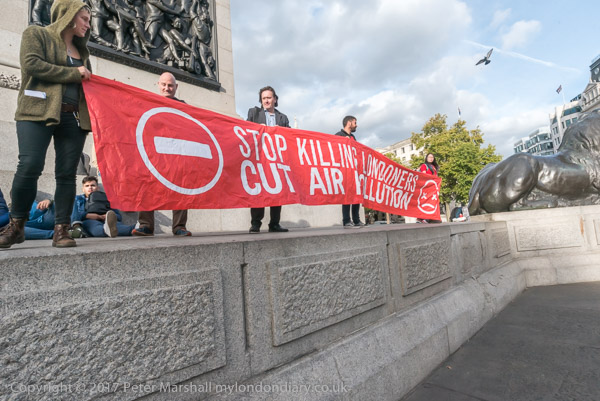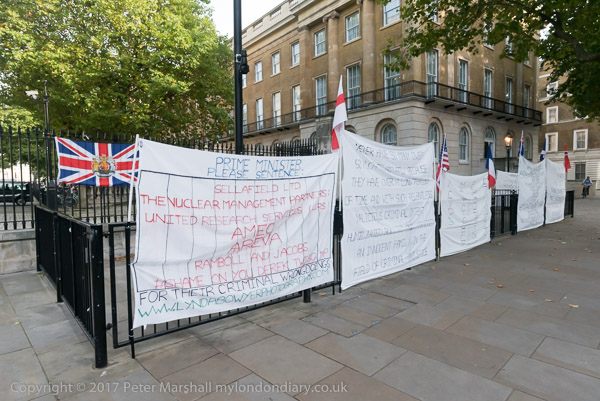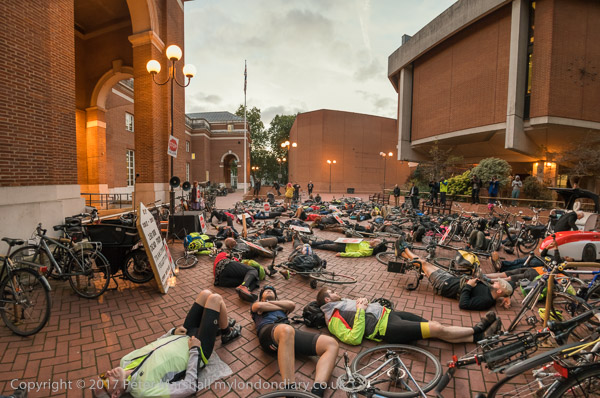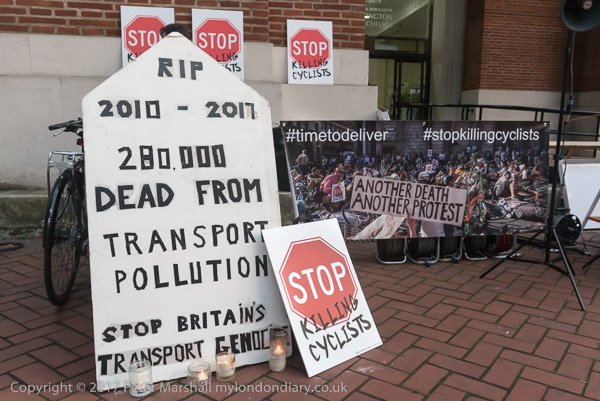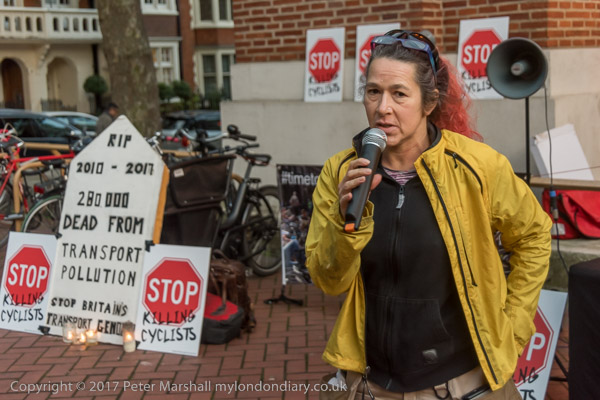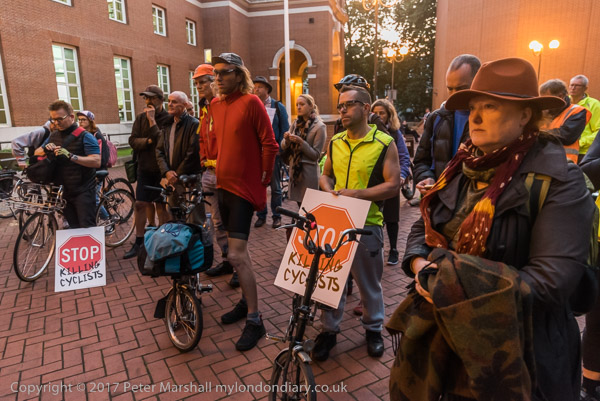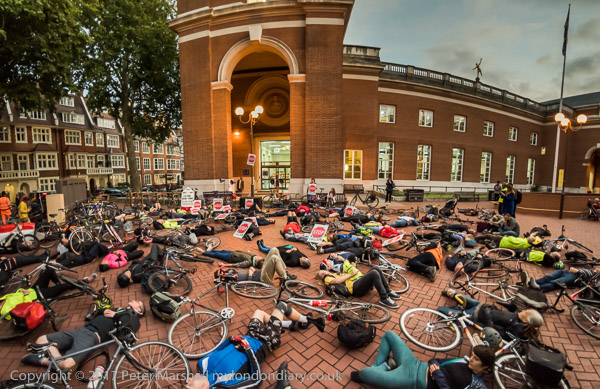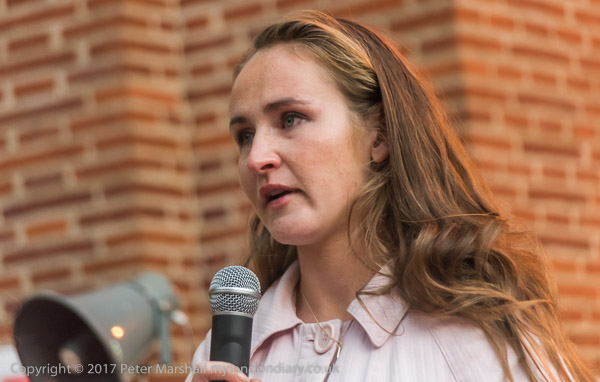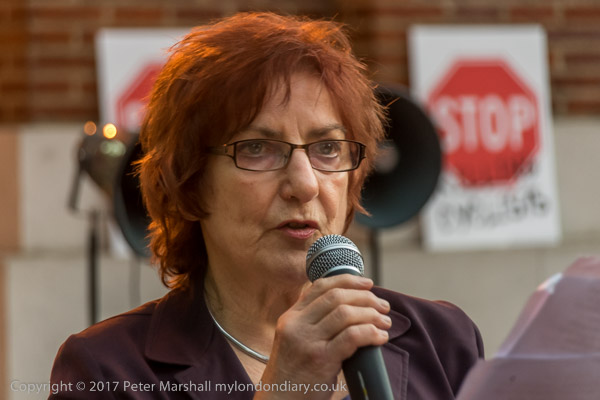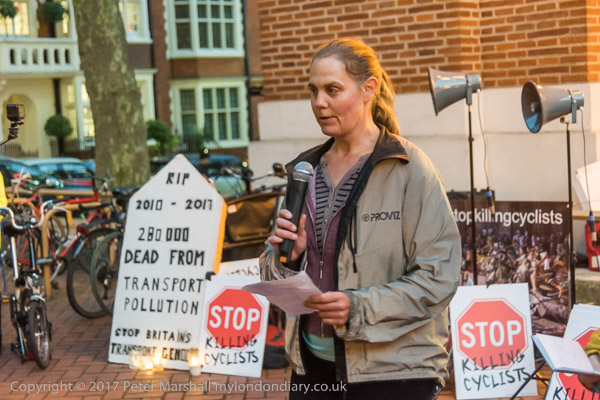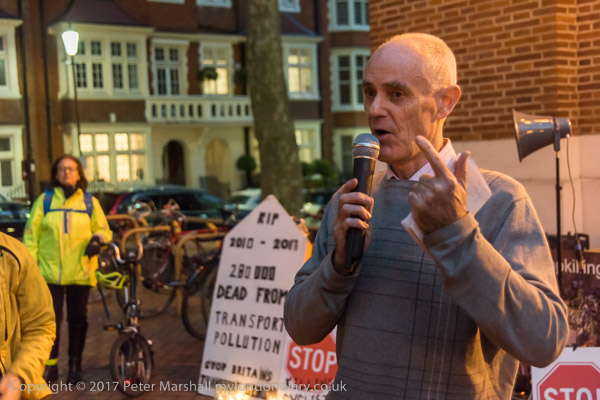Marco Polo, Chelsea Bridge, MAN holder & Convent – More pictures from my walk which began at Vauxhall on Friday 28th July 1989 with Nine Elms Riverside. The previous post was Kirtling Street to Battersea Power Station & the Dogs – 1989
One of few interesting postmodern buildings in London, Marco Polo House, designed by architect Ian Pollard for The Observer and British Satellite Broadcasting this was completed in 1989. It was demolished in 2014, probably to prevent it being listed and replaced by the rather anodyne flats now on the site.
Another picture of Marco Polo House with cars parked giving a good impression of the impressive scale. At right is the railway viaduct with a train passing on the line from Victoria Station. This is the southern end of the building with a fairy mature tree newly planted in the foreground; it only briefly survived the demolition of the building.
This giant stone carried the name of the building and I think was at the north end of the building on the corner of Sopwith Way or perhaps a little down that minor side-street. At right you can see a little of Marco Polo House and above it the unmistakable chimneys of Battersea Power Station, with the cranes with which McAlpine had removed the roof in the then recently abandoned scheme to convert it into a theme park.
I walked up Queenstown Road to the foot of Chelsea Bridge and went a few yards down the path into Battersea Park to take this picture looking across the Thames to Pimlico.
Although this was the side of an ancient river crossing fordable when the tide was low, the first bridge here was only opened in 1858 to provide access from north of the river to the new Battersea Park opened in the same year. This was a rather narrow and flimsy looking structure was named Victoria Bridge – and at the other end of the park Albert Bridge was built a few years later. Both were originally toll bridges but failed to be a commercial success and were taken over by the Metropolitan Board of Works in 1877 with the tolls being abolished in 1879.
It was renamed Chelsea Bridge when it was found to be structurally unsound to avoid any embarrassment to the Queen should it collapse but it was not until 1926 that a replacement was proposed. In the meantime the old bridge had appeared in many paintings, drawings and photographs, although the bridge that inspired Billy Strayhorn – probably from the painting by Whistler or Turner to name his impressionist composition Chelsea Bridge, was almost certainly of Battersea Bridge. The jazz standard was first recorded by the Ellington orchestra in 1941, after both had been replaced by more modern structures. Somehow I think the tune would have been less successful had it been named Battersea Bridge.
The current bridge opened in 1937 and “was the first self-anchored suspension bridge in Britain, and was built entirely with materials sourced from within the British Empire.” The main cables attach to the end of the bridge deck rather than onto the bank.
I turned around and walked back down Queenstown Road, and could not resist taking more pictures of Marco Polo House from the opposite side of the road.
Towering above it was the giant gasholder and I carefully chose my position to make this into an unlikely addition to the post-modern building. This was the largest and seventh gasholder to be built on the site for the Nine Elms gas works which was further down Nine Elms Lane and was built in 1932 to the innovative designs of the German company Maschinenfabrik Augsburg-Nürnberg and so was the MAN holder. It and the other remaining holders were finally demolished in 2015.
And this was the final picture I took of Marco Polo House on the walk, showing the south end of the building and attaching to it at right two of the Battersea Power Station chimneys.
I turned back onto Battersea Park Road to make this photograph of the former convent school, with the MAN gasholder appearing on the right edge of the picture. The Sisters of Notre Dame came to Battersea in 1870 to provide Catholic education for the poor children of the area with a public elementary school and also a private day school. In 1901 it reopened as Notre Dame High school for Young Ladies and in 1906 increased in size as it began to admit girls on LCC County Scholarships and a new wing was opened in 1907. Until 1919 there were some dormitories for boarders which were then converted to more classrooms and a library.
The grammar school expanded further after the Second World War and became a comprehensive in 1972, closing in 1982 when the building was sold. It was later converted into flats as The Cloisters.
More from my walk into Battersea in later posts.
Flickr – Facebook – My London Diary – Hull Photos – Lea Valley – Paris
London’s Industrial Heritage – London Photos
All photographs on this page are copyright © Peter Marshall.
Contact me to buy prints or licence to reproduce.













